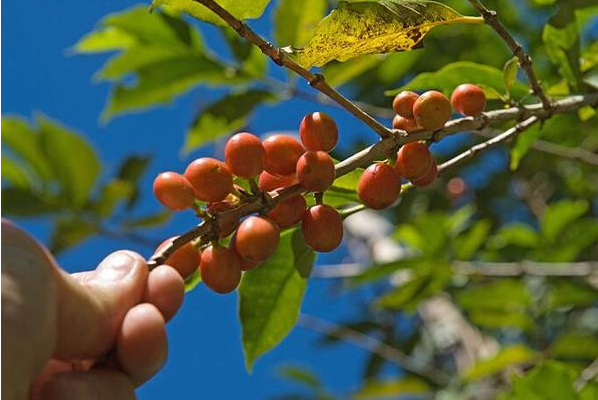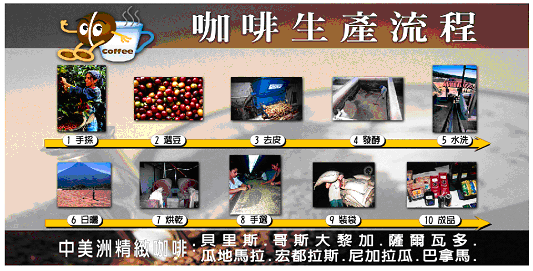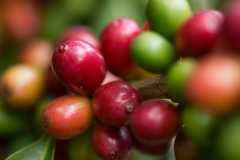Coffee trip-Central and South America. Quality and characteristics of cultivation environment in various zones

Professional coffee knowledge exchange more coffee bean information please follow the coffee workshop (Wechat official account cafe_style)
Know Central American Coffee-
Central America is a land bridge connecting North and South America. There are seven countries, namely, Belize, Costa Rica, El Salvador, Guatemala, Honduras, Nicaragua and Panama. Seven Central American countries all produce coffee, with Guatemala, Costa Rica and Honduras among the top 10 coffee exporters in the world.
Coffee originated in Central America in the 18th century, and this important economic product originated in Costa Rica around 1840. Since Central America became independent from Spain in 1821, wars have continued. Because Costa Rica was far away from the Spanish colonial capital of Guatemala, it was not affected by the civil war. On the contrary, the production of coffee in Guatemala and El Salvador was delayed because of the civil war. After that, the political dispute gradually subsided, and with the exception of Honduras, Central American countries began to produce coffee in the 19th century.
Central America has the natural advantages of sunshine, land, and mountains, and an abundant working population, which makes the region unique in growing and producing high-quality coffee. In the late 19th century, coffee had become an indicator of economic growth in Central American countries, and all Central American countries passed a bill to promote coffee. The most remarkable results have been achieved in countries such as Costa Rica El Salvador and Guatemala coupled with the scientific and technological way of growing coffee making Central America one of the four largest coffee producing regions in the world.
Coffee from Central and South America. The coffee in this area is suitable for roasting at the end of an explosion and can bring out sour and sweet flavors.
The flavor is well-behaved, unlike Africa's heroic and wild. In the world of coffee, accounting for 40%, is the largest producing area.
1 Brazilian coffee-an indispensable catalyst for beans. Appropriate sour, slightly sweet taste, smooth taste.
To Santos, Xi La multi-producing areas for more, is a commercial bean area.
2 Columbia Coffee-supermo is the highest grade of commercial beans.
(3) Guatemala-coffee beans with the highest CP value. It is suitable for all kinds of baking degree and individual product concentration. Famous are Waite Nangguo producing area and Antigua producing area (Flower God).
Multi-volcanic geology and plateau vertical valleys, changeable microclimate, contains extremely hard beans and boutique coffee beans, known as volcanic coffee.
Clear taste, sweet and sour taste of fruit, and sweet chocolate, with distinct layers. After drinking, the bottom of the cup has a strong smell of sugar.
4 Jamaica-Blue Mountain, dark and sour, smooth taste, not very distinctive.
Costa rica-No burden, thinnest body beans, refreshing and sweet taste, not suitable for beans.
6 Panama-geisha geisha, champion coffee. Very strong berry aroma, drink very clean and bright, sour aroma rich, delicious.
7 El Salvador-mainly in the middle and back, characterized by low sour gas and excellent mellow thickness.
The production of coffee beans in Central America
From coffee fruit-sowing-about 50 cm after one year-blossom after three years-green fruit after two months-cherry fruit after 6-7 months-harvest-soak-peel wash-dry-peel-select bean packaging-professional baking-grinding into powder-cooking and brewing-a cup of rich glycol Central American coffee with outstanding flavor.
Production flow chart:

Coffee prices have hit rock bottom in recent years, especially under the World Bank credit subsidy in Vietnam, where mass production has disrupted market prices, making coffee farmers in Central and South America miserable, threatening to leave coffee trees idle and refuse to plant them if coffee prices cannot return to a reasonable price. Although the lower the price of coffee, it seems to be a great pleasure for coffee consumers, it may lead to a decline in the quality of the coffee we drink. Central American coffee is a world-class high-quality coffee that can be praised with a thumbs up. In order to continue to enjoy better quality coffee, please support and buy Central American coffee.
Important Notice :
前街咖啡 FrontStreet Coffee has moved to new addredd:
FrontStreet Coffee Address: 315,Donghua East Road,GuangZhou
Tel:020 38364473
- Prev

Does acrylamide in coffee really cause cancer? What other foods besides coffee also contain?
(photo screenshot on The Guardian News website) Professional coffee knowledge exchange more coffee bean information please follow the coffee workshop (official Wechat account cafe_style) the news about whether coffee causes cancer has recently caused a debate: "A court in California recently ruled that the sale of acrylamide coffee containing 2A carcinogen must be clearly defined in the external standard of coffee products in the future.
- Next

The aroma of orange and berry is the most important feature of African beans, and it also attracts coffee fans to delve into it.
For more information on coffee beans, please pay attention to the coffee workshop (official Wechat account cafe_style). Characteristics of African coffee: charming sour African bean flavor: strong orange flavor of Ethiopian coffee, strong berry flavor of Kenyan coffee, sour aromas of black plum juice and grapefruit, and sweet smell of sugar cane. The orange aroma of Ethiopian coffee
Related
- Beginners will see the "Coffee pull flower" guide!
- What is the difference between ice blog purified milk and ordinary milk coffee?
- Why is the Philippines the largest producer of crops in Liberia?
- For coffee extraction, should the fine powder be retained?
- How does extracted espresso fill pressed powder? How much strength does it take to press the powder?
- How to make jasmine cold extract coffee? Is the jasmine + latte good?
- Will this little toy really make the coffee taste better? How does Lily Drip affect coffee extraction?
- Will the action of slapping the filter cup also affect coffee extraction?
- What's the difference between powder-to-water ratio and powder-to-liquid ratio?
- What is the Ethiopian local species? What does it have to do with Heirloom native species?

